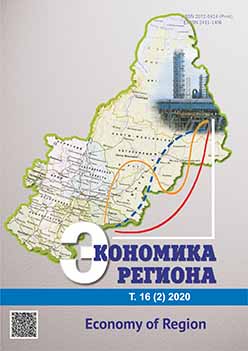ФОРМИРОВАНИЕ ПРОГРАММЫ ПРЕДОТВРАЩЕНИЯ РЕГИОНАЛЬНЫХ КОНФЛИКТОВ ПРИ ИСПОЛЬЗОВАНИИ
ПРИРОДНЫХ РЕСУРСОВ
Program for Regional Conflict Prevention when Using Natural Resources
Author(s): Irina Yurievna Novoselova, Andrey Alekseevich Avramenko, Ruslan Allahverdi ogly AlievSubject(s): Economy
Published by: Институт экономики Уральского отделения Российской академии наук
Keywords: conflicts in mining regions; interests of the population; priority projects; shared funding; program; compensation projects; optimization model; an optimality criterion; rating scale
Summary/Abstract: The extraction of natural resources in the mining regions causes environmental pollution, changes the landscape, and reduces biodiversity, and leads to conflicts between the local population and the mining enterprises. The paper aims to design a methodological tool for eliminating social tensions in the mining regions during field development and exploitation. The goal can be achieved by creating compensation projects that take into account the priorities assessed by the stakeholders: the population, the regional authorities and the mining enterprise. As the compensation projects strive to solve social and environmental problems in the mining regions, they include the direct financial compensation to the population, development of traditional enterprisers, reduction of environmental pollution, infrastructure development, etc. We focused on two logically connected tasks: 1) assessing the significance of compensation projects and funding by the regional budget and the mining enterprise; 2) determining the sequencing of the considered projects. For solving the first task, we proposed a method of the multi-criteria significance assessment of program projects from the perspective of the population, the regional authorities and the mining enterprise, based on a specific unified rating scale. This method uses a technique that cuts off options with low interest in the projects. Thus, it allows assessing the significance of the program projects, as well as calculating the shares of funding by the mining enterprise and the regional budget. For solving the second task, we applied the economic and mathematical model and the heuristic method, determining which projects should be implemented first. The experimental calculations showed that the developed compensation programs comply with the preferences of the stakeholders. The application of the developed approach can contribute to the balanced socio-economic development of the mining regions in conditions of intensive field development and exploitation.
Journal: Экономика региона
- Issue Year: 16/2020
- Issue No: 2
- Page Range: 637-648
- Page Count: 12
- Language: Russian

